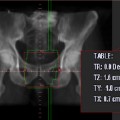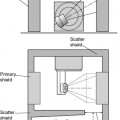Chapter 15 Epidemiology of cancer and screening
Epidemiology and the prevention of cancer
Criteria for causality
• a strong association (a large relative risk) is more likely to indicate causality than a weak one
• associations that are replicated in several studies of the same design or using different epidemiological approaches or under different circumstances of exposure are more likely to represent a causal relationship than isolated observations from single studies
• if the risk of the disease increases with the amount of exposure, this is considered to be a strong indication of causality
• demonstration of a decline in risk after cessation of or reduction in exposure in individuals or in whole populations also supports a causal interpretation
• although a carcinogen may act upon more than one target organ, the specificity of an association (an increased occurrence of cancer at one anatomical site or of one morphological type) adds plausibility to a causal relationship
• where an increase in exposure in a population and an increase in the incidence of a cancer are apparent, there must be a sensible latency (20+ years for solid tumours, 3+ years for blood-borne cancers) between the timings of the two increases
• there is evidence from animal models of a link between the exposure and the occurrence of the cancer
• there is a biological mechanism in humans for a link between the exposure and the cancer
• bias and confounding can be ruled out as possible explanations for the association.







